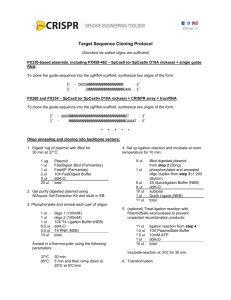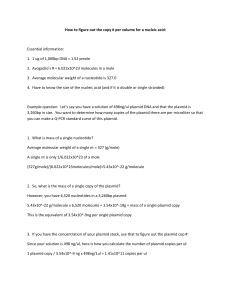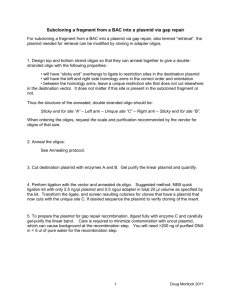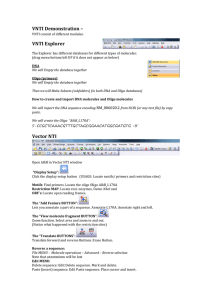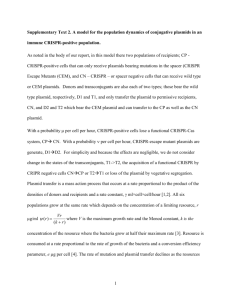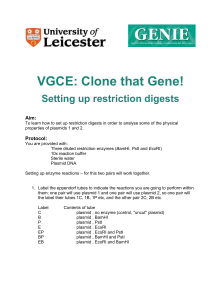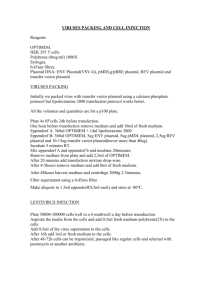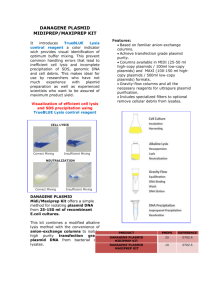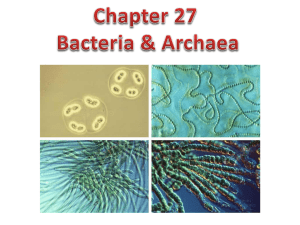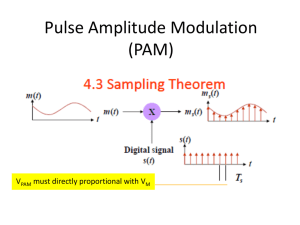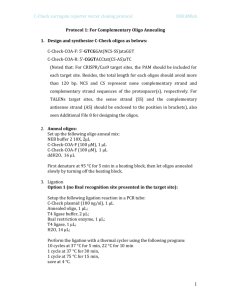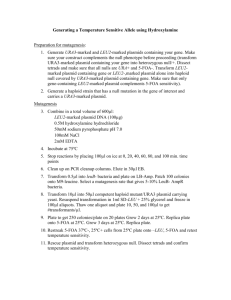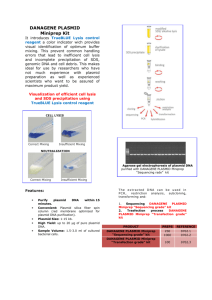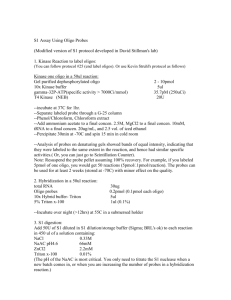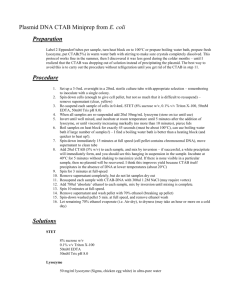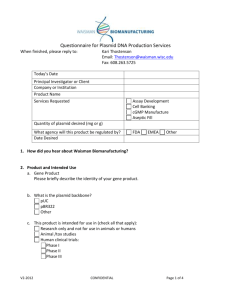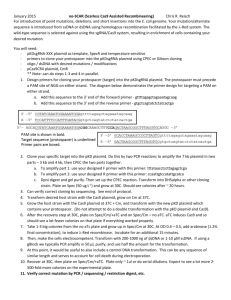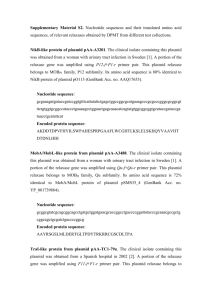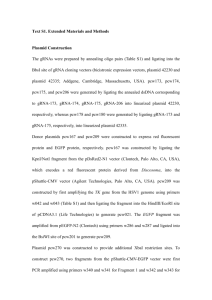pU6-Universal protocol
advertisement
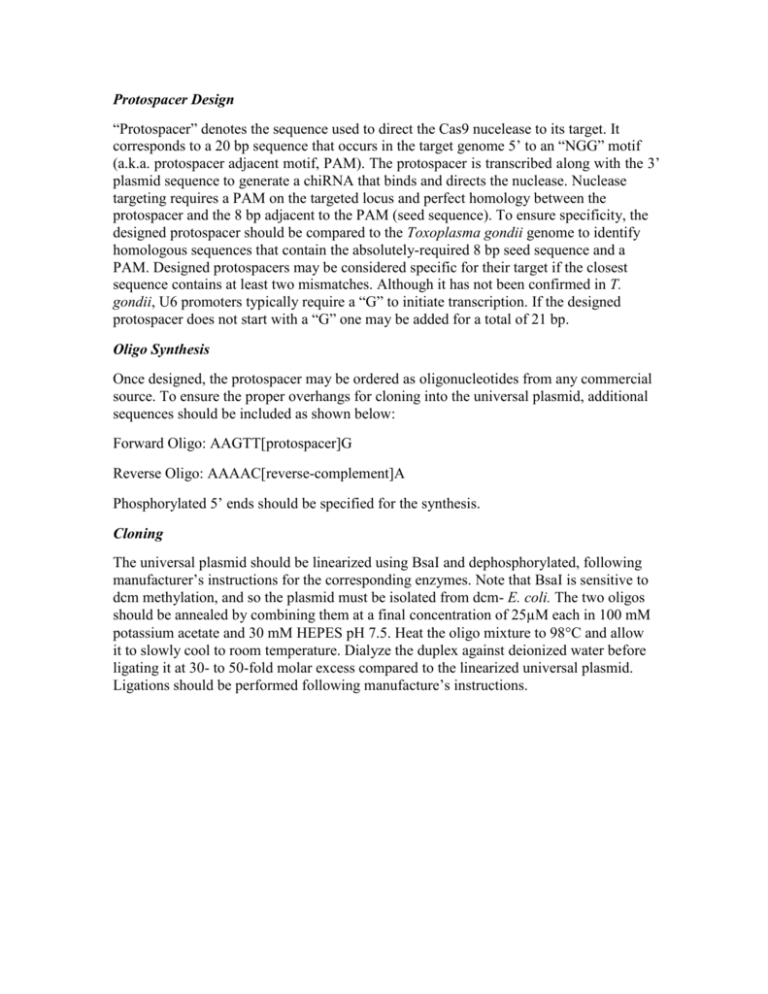
Protospacer Design “Protospacer” denotes the sequence used to direct the Cas9 nucelease to its target. It corresponds to a 20 bp sequence that occurs in the target genome 5’ to an “NGG” motif (a.k.a. protospacer adjacent motif, PAM). The protospacer is transcribed along with the 3’ plasmid sequence to generate a chiRNA that binds and directs the nuclease. Nuclease targeting requires a PAM on the targeted locus and perfect homology between the protospacer and the 8 bp adjacent to the PAM (seed sequence). To ensure specificity, the designed protospacer should be compared to the Toxoplasma gondii genome to identify homologous sequences that contain the absolutely-required 8 bp seed sequence and a PAM. Designed protospacers may be considered specific for their target if the closest sequence contains at least two mismatches. Although it has not been confirmed in T. gondii, U6 promoters typically require a “G” to initiate transcription. If the designed protospacer does not start with a “G” one may be added for a total of 21 bp. Oligo Synthesis Once designed, the protospacer may be ordered as oligonucleotides from any commercial source. To ensure the proper overhangs for cloning into the universal plasmid, additional sequences should be included as shown below: Forward Oligo: AAGTT[protospacer]G Reverse Oligo: AAAAC[reverse-complement]A Phosphorylated 5’ ends should be specified for the synthesis. Cloning The universal plasmid should be linearized using BsaI and dephosphorylated, following manufacturer’s instructions for the corresponding enzymes. Note that BsaI is sensitive to dcm methylation, and so the plasmid must be isolated from dcm- E. coli. The two oligos should be annealed by combining them at a final concentration of 25µM each in 100 mM potassium acetate and 30 mM HEPES pH 7.5. Heat the oligo mixture to 98C and allow it to slowly cool to room temperature. Dialyze the duplex against deionized water before ligating it at 30- to 50-fold molar excess compared to the linearized universal plasmid. Ligations should be performed following manufacture’s instructions.


